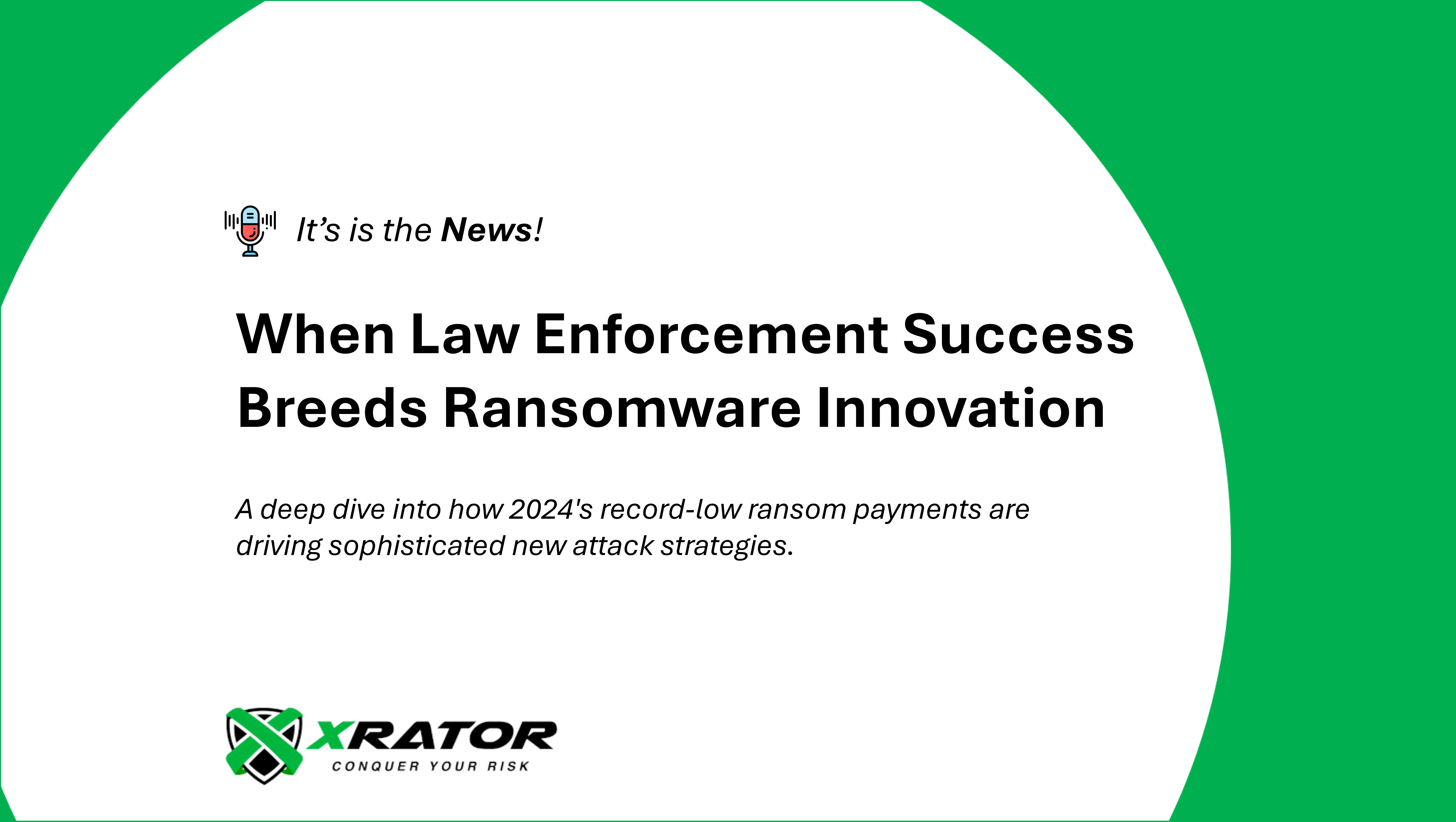The dramatic drop in ransomware payments to an all-time low of 25% marks a significant shift in the cybercrime landscape, but the underlying dynamics reveal a more complex reality. While the median payment declined 45% to $110,890, sophisticated threat actors are adapting their strategies, demonstrating the resilience of cybercrime business models.
The reduction in payments stems from multiple factors: improved organizational defenses, enhanced backup capabilities, and intensified law enforcement pressure. However, this success has prompted criminals to evolve their tactics, with data exfiltration cases rising from 76% to 87% in Q4 2024. This shift suggests that rather than deterring cybercrime, current pressures are forcing threat actors to innovate and diversify their attack strategies.
Law Enforcement’s Double-Edged Success
The string of high-profile arrests and infrastructure takedowns throughout 2024, including actions against LockBit and Scattered Spider, has created unprecedented pressure on cybercriminal operations. The psychological impact of these operations extends beyond immediate disruption, fostering distrust within criminal networks and raising the cost of doing business for cybercrime enterprises.
However, this success has led to unintended consequences. The disruption of established criminal hierarchies has given rise to more agile, independent operators. The emergence of “lone wolf” actors maintaining a significant market share demonstrates how the breakdown of traditional ransomware-as-a-service (RaaS) models has spawned a more distributed threat landscape that may prove harder to combat.
The Evolution of Attack Sophistication
Modern ransomware operations have transcended simple encryption tactics. Threat actors increasingly leverage artificial intelligence, SEO manipulation, and advanced social engineering to enhance their attacks. The focus on ESXi hypervisor systems, appearing in 85% of cases, shows a strategic shift toward targeting infrastructure that can maximize impact while minimizing detection.
The rise of groups like Akira and Fog, each claiming 11% market share, demonstrates how avoiding high-profile targets and focusing on sustained, lower-profile operations can prove more profitable and sustainable for threat actors. Their success in maintaining operations while avoiding regulatory scrutiny presents a new challenge for defense strategies.
The Business Impact Dimension
The concentration of attacks on mid-sized companies (41.53% targeting organizations with 101-1,000 employees) reveals a calculated approach by threat actors. These organizations often possess valuable data while lacking enterprise-grade security resources, creating an optimal risk-reward ratio for attackers. This targeting pattern suggests that traditional security models may need reevaluation to better protect vulnerable market segments.
Organizations must adopt a comprehensive approach to combat evolving ransomware threats. This includes implementing robust backup solutions, enhancing detection capabilities, and maintaining strong incident response plans. The rise in data exfiltration attacks particularly emphasizes the need for advanced data protection and monitoring capabilities.
XRATOR’s Role in Enhanced Protection
Initial access vectors and lateral movement tactics, from initial access through lateral movement to final impact, highlights the critical importance of proactive vulnerability management. Organizations need solutions that can identify, prioritize, and remediate vulnerabilities before they can be exploited, particularly in critical systems like ESXi hypervisors.
In light of these evolving threats, XRATOR’s vulnerability management platform offers organizations the continuous threat exposure management (CTEM) capabilities needed to stay ahead of sophisticated ransomware operations. By providing comprehensive vulnerability assessment, prioritization based on actual risk, and automated remediation workflows, XRATOR helps organizations establish a proactive security posture that addresses the root causes of successful ransomware attacks. The platform’s ability to identify and prioritize critical vulnerabilities, particularly in virtualization infrastructure, enables organizations to focus their limited resources on the most impactful security improvements.






